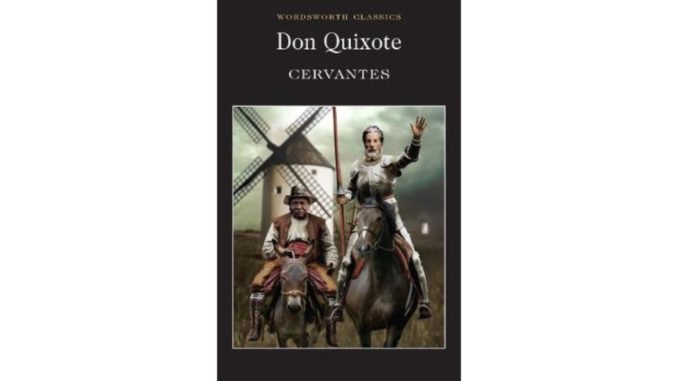
If you’re like me, your impression of Don Quixote is that of a delusional old knight charging at windmills, possibly because he suffers from hallucinations. While that’s true, he only really does that in the first few chapters of the eponymous book. How do I know that? Because I read that thick, solid tome, which is 768 pages long. If you’re the kind who needs (or likes) illustrations in books… there are a grand total of eight illustrations. They don’t always connect with the chapters they are placed in either, but I guess it’s something to look forward to.
Don Quixote is actually composed of two books. The first book is sort of a compilation of the various unconnected adventures of Don Quixote. The second book, however features an actual long-running plot where Don Quixote goes on a quest to to “cure” the curse that has been placed on Dulcinea, the maiden whom he purportedly goes on his quests for. Don Quixote was written by Miguel de Cervantes.

So let’s get the first question out of the way – is it difficult to read? Yes, because the style of English is very different from what we’re used to, nor is brevity even attempted in the book. Also, there are minimal paragraph breaks. Plus, a lot of words took on different meanings way back when, and there’s a lot of allusions to events/mythology that we’re not all that familiar with today.
However, you get pretty used to it after the first ten chapters, and it’s fairly simple to understand the flow of the story thereafter. It’s not as difficult as it seems at first, that’s for sure. There are also footnotes and appendices, but those are only half-useful.
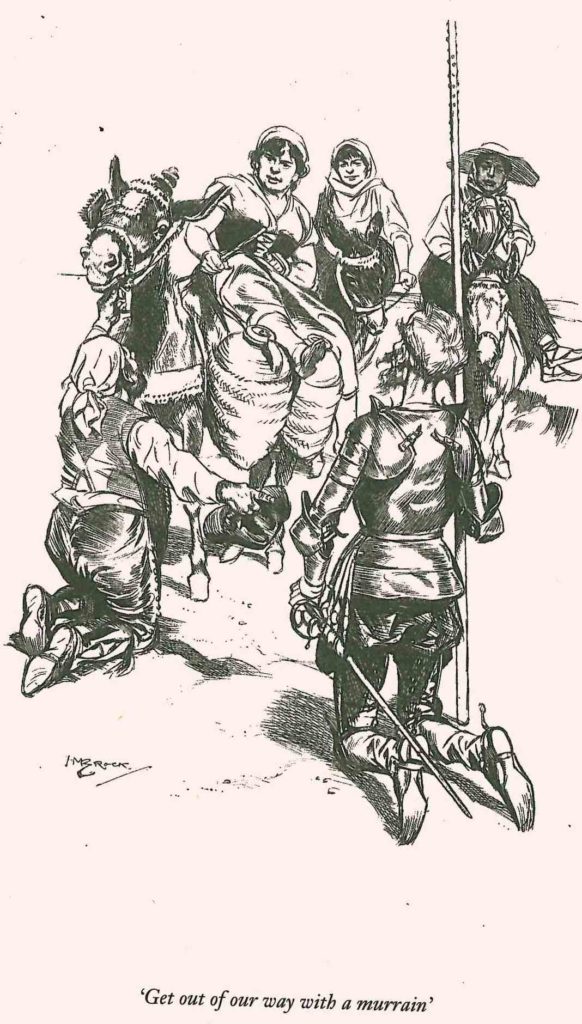
Generally speaking, footnotes are placed on the page itself – and they explain the context behind the many allusions used in the book. However, there are also appendices for the definitions of esoteric words – but as appendices, you have to flip to the back of the book to read it. This whole style of annotation makes no sense. Why would you put references at the bottom of the page AND at the back of the book? You end up having to flip back and forth anyway, so why not just put everything at the bottom of the page? As much as I appreciate the notes that were provided, I also didn’t make much use of them after the first ten or so chapters. When you’re carrying a small, 700+ page book around, flipping back and forth is the last thing you’d want to do.
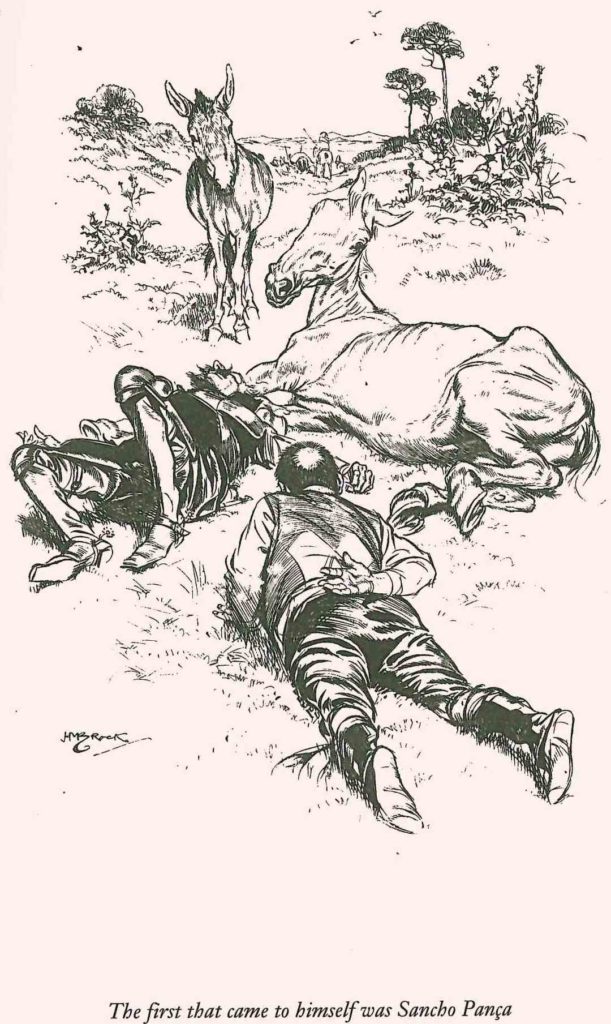
That being said, Don Quixote is rather funny – if you appreciate crude jokes and all. There are plenty of instances of raunchy humour, pee and dung jokes, and all manner of funnies that would be considered crass today. The thing is that they are all described in such a matter-of-fact way that you can’t help but see it as just a description of events, rather than an attempt at crude humour. For example, they accidentally leave their male horse untied in one chapter, and it goes crazy with lust when a bunch of mares walks past. There are also several instances when the characters attempt certain bodily functions without trying to let others know, and fail miserably.

Don Quixote and Sancho Panza’s adventures are rather episodic though – meaning that everything goes back to status quo after the conflict has been resolved. In that respect, it feels very much like a television series and I’m pretty sure it could be adapted into one. Of course, it’s very, very talky – that’s how Don Quixote frequently gets into trouble, after all – and their dialogue is not always easily comprehensible.

The book ends with the demise of the title character – but it’s a horrible letdown. He dies in the most boring way possible. In fact, he meets his end in such a blase way that it’s quite evident that some sort of message is supposed to be conveyed from the events. You can make of it what you will, but I thought that was a terribly dreary way to end a fairly funny book.

Don Quixote is a fairly entertaining read, although you do need to power through the first few chapters to get the hang of it. In that sense, it’s a bit like an RPG where you have to spend the first few hours with a steep learning curve. If you’re interested in esoteric, weird, or just offbeat humour, then Don Quixote‘s a good read. But it’s not light reading for sure, and it’s going to be tough holding it with one hand to read (I tried very hard).
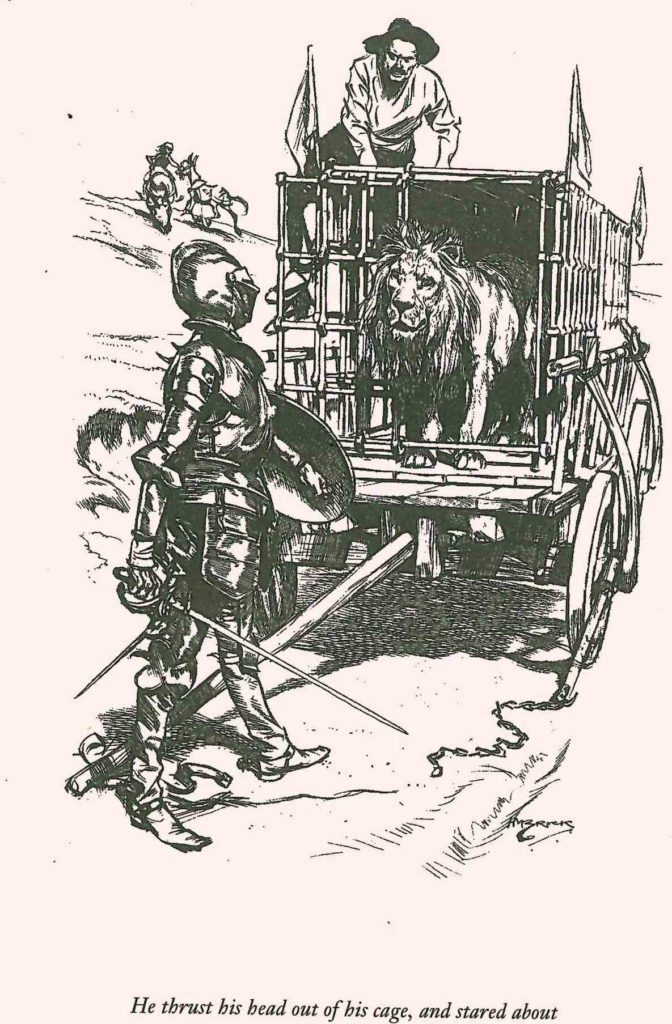
Should you acquire an electronic edition of the book? Yes.
Should you buy a physical copy of the book? Yes, as a gift for a bookworm.
Score: 3.5/5
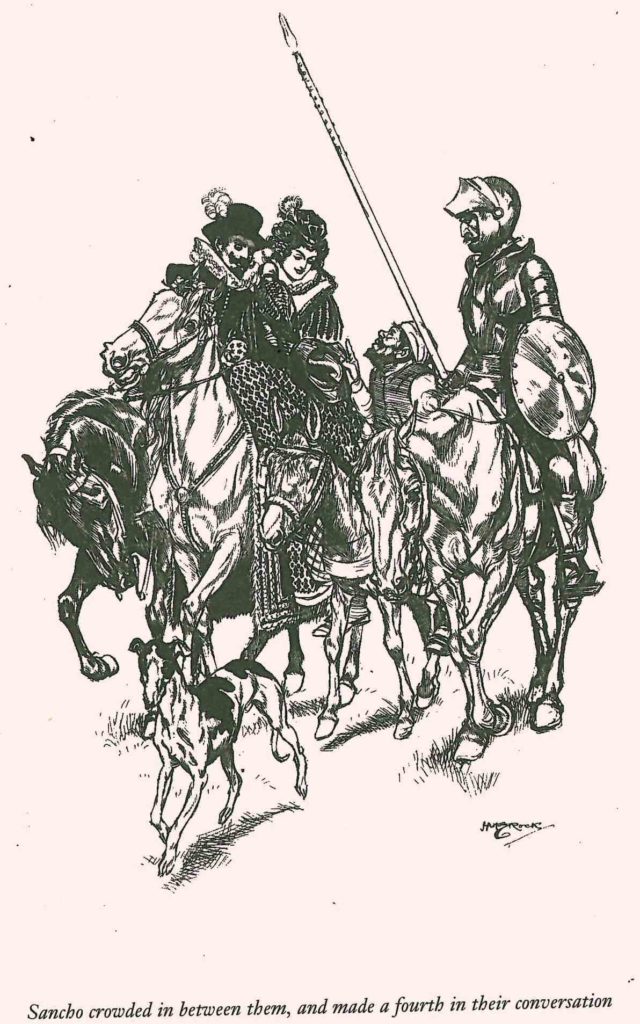
Don Quixote is a comedic and dramatic novel by Miguel de Cervantes. It was originally in Spanish and published as two books, ten years apart. I read the Woolsworth Classics version (translated into English by P.A. Motteux).
The novel follows the adventures of an inept and deluded old man who thinks he is a knight. Somehow, he manages to convince his hapless neighbour to follow him on his journey, and they get into all sorts of hijinks and scrapes in their travels. They do learn something from their quest(s)… but whether they remember those lessons is another thing altogether.

You can buy the book on:
– Book Depository
– Amazon
This is an original article on marcusgohmarcusgoh.com
Follow Marcus Goh (yes, referring to myself in third person) on Facebook and Instagram for more (presumably) good updates!
I’m an independent scriptwriter who’s written for popular shows like Lion Mums, Crimewatch, Police & Thief, and Incredible Tales. I’m also a Transformers enthusiast and avid pop culture scholar. You can find me on social media as Optimarcus and on my site.
Send me an email if you want to get in touch!
I learned so much from reading this book. Like did you know that Don Quixote is considered the first modern novel? And it inspired Dickens, Flaubert, Joyce and Prouse? Part I has chapter breaks according to the events in the novel but Part II develops into c the traditional novel where the chapter breaks are based on the emotions of the characters. We get to hear more often what the characters think (I got that from Sparknotes just FYI).